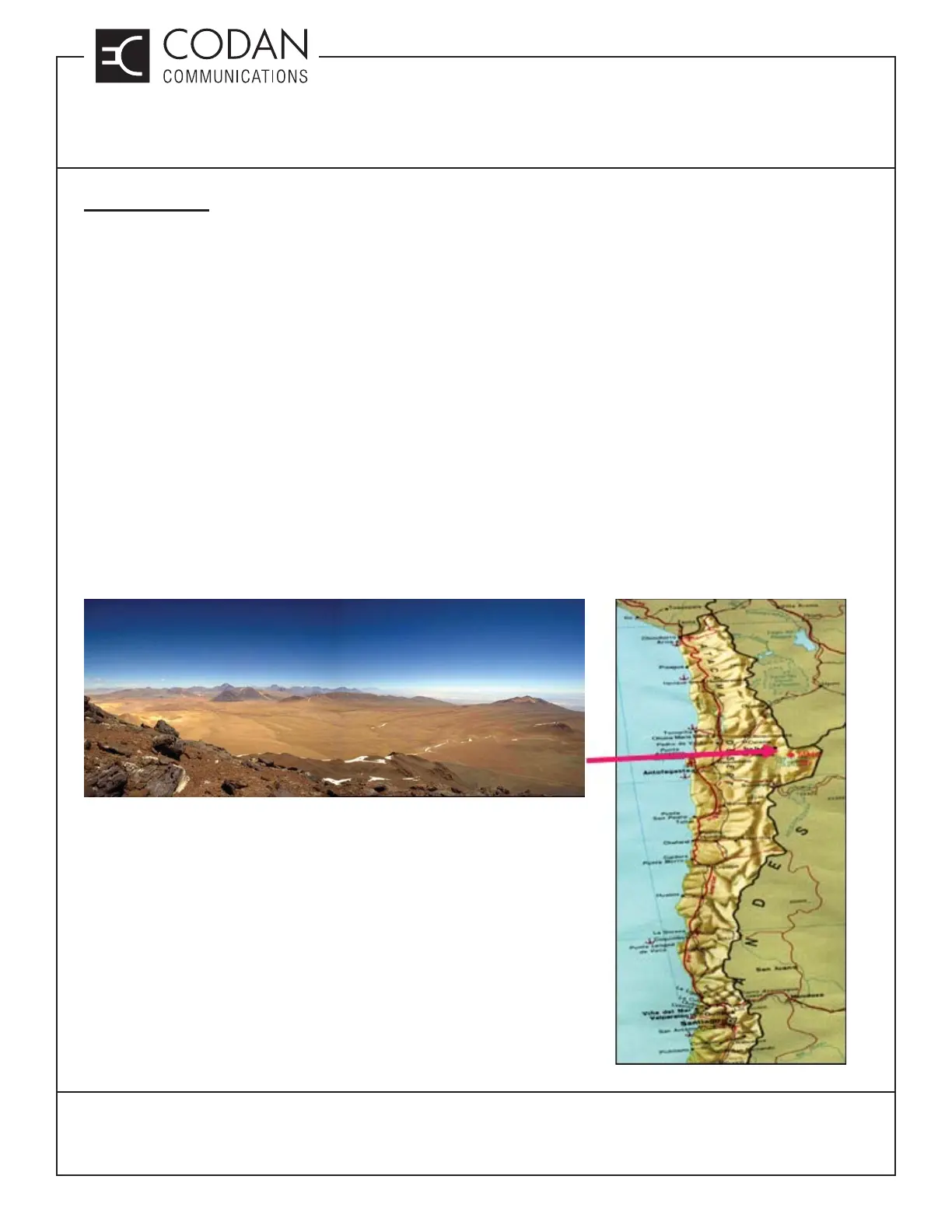EN130 Atacama Large Millimeter Array (ALMA)
EXPLANATORY NOTES
Page 1 of 2
LMRSALES@CODANCOMMS.COM
CODANCOMMS.COMEXPLANATORY NOTE:
EN130, REV 2-1-0, © Mar 2013
CANADA/US +1 250 382 8268 | TOLL FREE +1 800 664 4066
What is ALMA?
The Atacama Large Millimeter Array (ALMA) will be one of astronomy’s most powerful telescopes, providing
unprecedented imaging capabilities and sensitivity many orders of magnitude greater than anything of its kind
today.
ALMA will be an array of 66 radio antennas that will work together as one telescope to study millimetre- and
submillimetre-wavelength electromagnetic waves from space. These wavelengths, which cross the critical boundary
between infrared and microwave radiation, hold the key to understanding such processes as planet and star
formation, the formation of early galaxies and galaxy clusters, and the formation of organic and other molecules in
space.
A specialized computer, called a correlator – running at 16,000 million-million operations per second – will combine
all of the data from the 66 antennas to make images of remarkable quality. The confi guration of the 66 antennas will
be variable, providing a sort of zoom capability. In its largest confi guration, the image detail provided by the array
will be comparable to that which a single radio telescope 14 km in diameter would provide.
Since atmospheric water vapour absorbs millimetre waves, ALMA will need to be constructed in a very dry area,
preferably at a very high altitude. Extensive tests showed that the sky above the Atacama Desert of Chile has the
unsurpassed clarity and stability essential for ALMA. That is why ALMA will be built in the Chilean Andes at 5,000
metres (16,500 feet) elevation.
View south from Cerro Chajnantor, Chile, of ALMA site.
Image courtesy of NRAO/AUI
An international partnership between North America and Europe funds
and operates ALMA. The National Research Council of Canada has
joined with the U.S. National Radio Astronomy Observatory to form the
North American partnership, which is the largest ground-based astronomy
endeavour ever undertaken.
